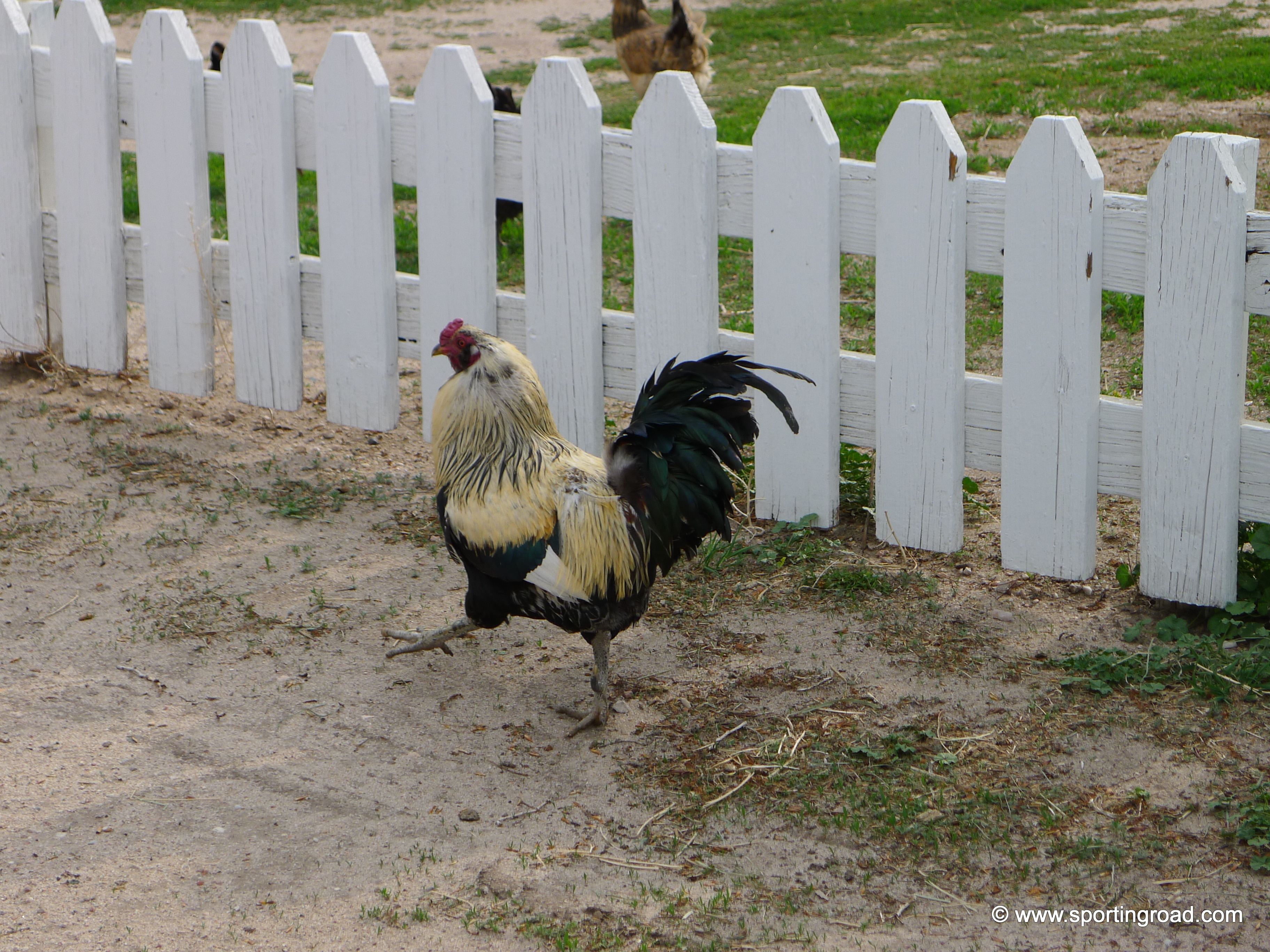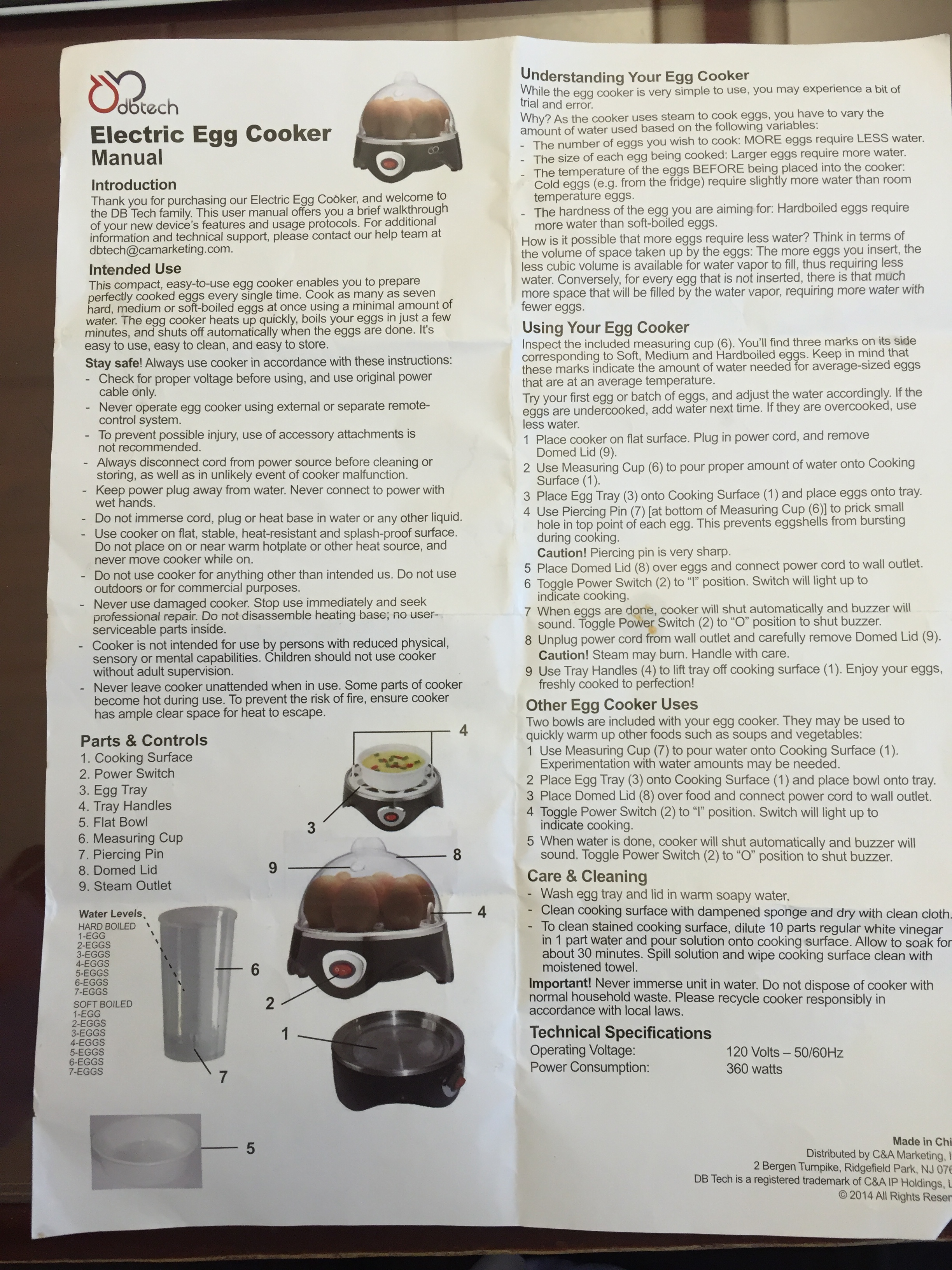Adding about a teaspoon of baking soda to the cooking water increases the alkalinity, which will make the eggs easier to peel later on.
I confess I am not a fan of Julia Child, as much as I want to love her. It’s not that I don’t appreciate what she did for French cooking in America, it’s just that I don’t like her recipes that much, a fact I discovered in watching Jacques Pepin and Julia face off in their PBS cooking series. I am a Jacques fan.
Julia recommends that to make the perfect hard-boiled egg, the water should cover the eggs by 1 inch, so use a tall pan, and lay the eggs in the pan. Set over high heat and bring just to the boil; remove from heat, cover the pan, and let sit exactly 17 minutes. When the time is up, transfer the eggs to the bowl of ice cubes and water. Chill for 2 minutes while bringing the cooking water to the boil again. (This 2 minute chilling shrinks the body of the egg from the shell.) Transfer the eggs (6 at a time only) to the boiling water, bring to the boil again, and let boil for 10 seconds – this expands the shell from the egg. Remove eggs, and place back into the ice water.
But, we follow Jacques’ method of how to boil an egg, which is:
- Use a sharp object like a sewing needle or a thumb tack to puncture a hole in the round end of the egg, where the air chamber is. It releases pressure inside of the egg, so don’t worry, the shell won’t crack. Boil a pot of water. Leave the eggs out while the water starts to boil, as you want them at room temperature.
- Gently lower the eggs in a very gently boiling pot of water and let return to a boil for 10 minutes. They should not boil at too high a temperature, otherwise the egg white will be tough, and the inside green and rubbery, so just a slow simmer will do.Then submerse immediately in cold water.
- After the eggs have simmered, pour out the hot liquid, and shake the pan to crackle the shells if you are serving immediately.
- Next submerge the eggs in an ice water bath. Leave the eggs in the cold bath for 15 minutes, enough time to allow the eggs to cool and the stinky sulfur inside the eggs to dissipate into the ice water.
- Peel the egg under a stream of water. This makes it easier to peel away the egg’s thin outer membrane.
Jacques explains that as eggs get older, their air chamber gets larger. To get a sense of the age of an egg, submerge it in water. Older eggs will float, while fresh ones will sink. We get our eggs at the polo farm during the summer months, which has a chicken coop next to the barn. Sometimes we have to get the chickens off of our saddles in the barn, as they let them wander during the day. But sometimes the eggs are too fresh and difficult to peel. The fresher the eggs, the harder it will be to peel them because the white membrane is just not mature enough. Hard boiling farm fresh eggs will invariably lead to eggs that are difficult to peel. The best eggs for boiling are older eggs, not fresh ones. We have found this to be very true with our farm fresh eggs. Two to three weeks is necessary, the average time before you see them in the grocer, before you can even think about boiling them for hard-boiled eggs.
DIFFERENT METHOD FOR FARM EGGS-How to Hard-Boil Farm Fresh Eggs
1. Boil water in a large saucepan. (Enough to cover the eggs at least an inch.)
2. Carefully lower the eggs into the boiling water. Lower the heat to simmer.
3. Cover and cook for 5 minutes.
4. Turn the heat off but leave the pan on the hot burner for at least 20 minutes. (I leave it there longer when I’m not in a hurry.)
5. Carefully drain the water off.
6. Cover the eggs with ice water to cool them quickly.
7. Refrigerate for later use or peel. Cry happy tears as the shells slip right off.
You can use Gordon Ramsay’s approach to easily peel eggs. It works using the same principle of letting water seep in between the whites and shell, though as you might expect, he takes on a gentler (perhaps more professional) approach. Instead of using a glass or jar, Ramsay uses the same pot he cooked the eggs in, refilling it with fresh water. As he demonstrated in a video posted to his YouTube channel, he starts by cracking the eggs against the side of the water-filled pot, effectively accomplishing the same thing that shaking does. After the shells are cracked and enough water has seeped underneath them, he is then able to peel the eggs with noticeable ease.
Or get an electronic egg cooker, it’s our new favorite kitchen gadget, and I am not really into cooking gadgets, but this one is worth the money:
How to use an Electric Egg Cooker
4 tsp = 6 soft boiled eggs
5 tsp = 5 soft boiled eggs
6 tsp = 3 soft boiled eggs
7 tsp = 1 soft or 7 med
8 tsp = 6 med boiled eggs
9 tsp = 5 med boiled eggs
10 tsp = 3 med boiled eggs
11 tsp = 2 med boiled eggs
12 tsp = 1 med boiled egg
14 tsp = 7 hard boiled eggs (1/4 cup)
15 tsp = 6 hard boiled eggs
17 tsp = 5 hard boiled eggs
18 tsp = 4 hard boiled eggs
20 tsp = 3 hard boiled eggs
21 tsp = 2 hard boiled eggs
23 tsp = 1 hard boiled egg



Leave A Comment
You must be logged in to post a comment.